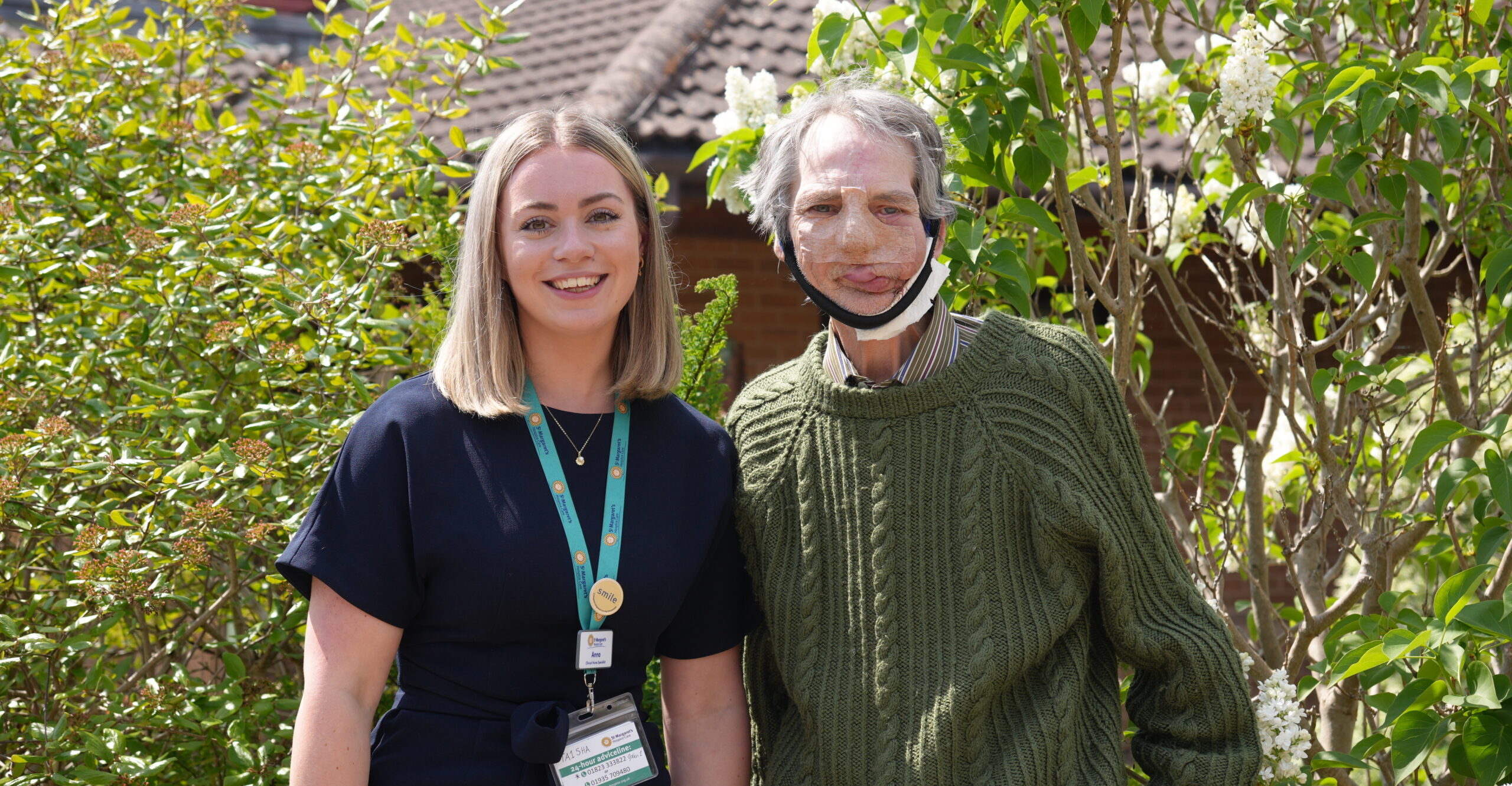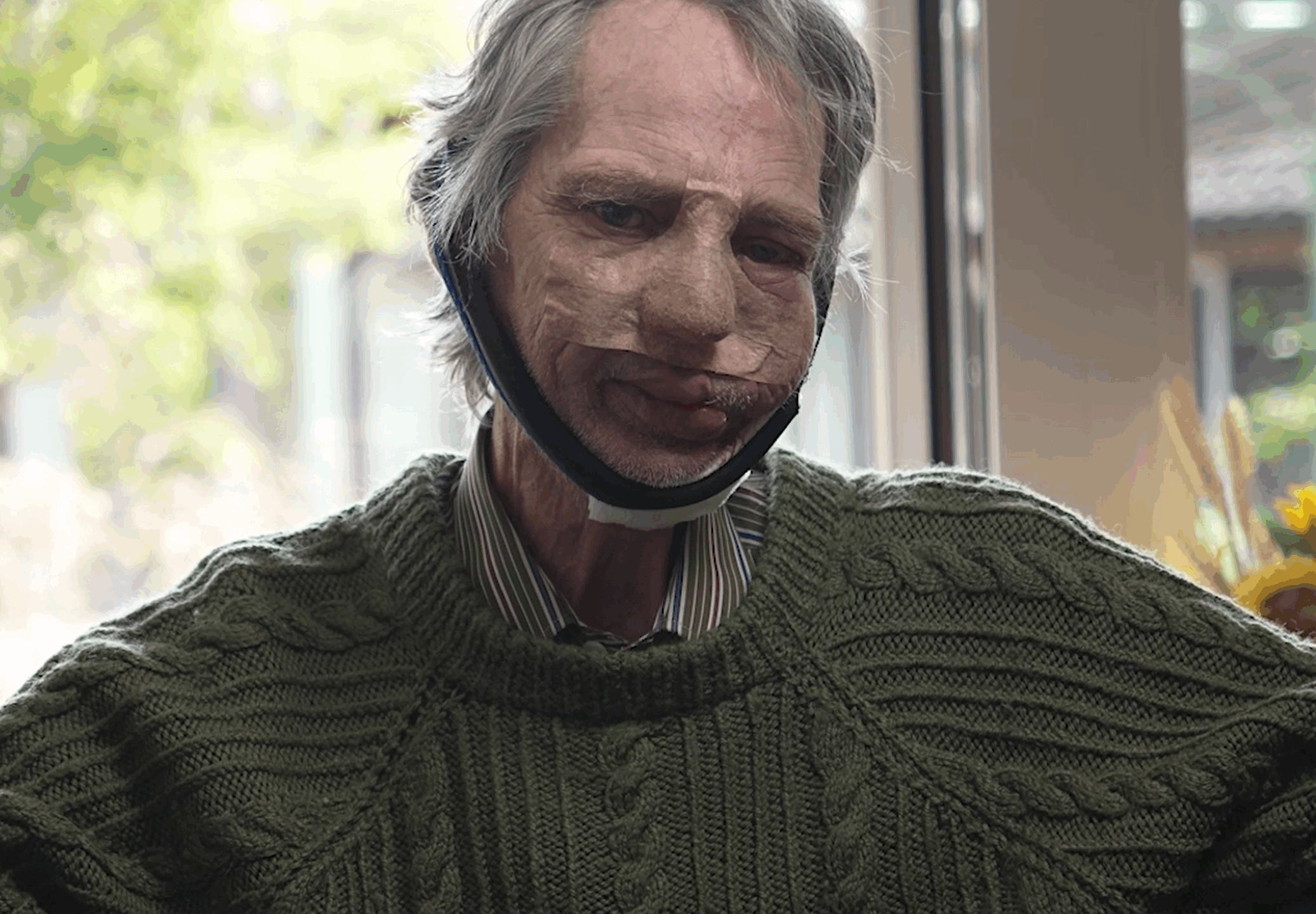Richard is 60 years old and lives alone. Over a year ago, he became a patient at St Margaret’s Hospice – a place he now speaks of with warmth, reverence, and deep gratitude.
“I’ve been under the care of the wonderful St Margaret’s Hospice for over a year,” Richard says. “Since day one, when I met my personal carer Anna, the true value of this hospice has been clear.”
Living alone, Richard carried the heavy burden of a very real fear: of dying unnoticed and not being found. “But now I have this weekly contact with my nurse Anna, who has been the reliable port of call that I can contact at any time. And it’s reassured me with my biggest fear about dying and being left too long.
It's like having somebody watching over me."
Anna’s support and advice has completely changed Richard’s life. “The advice has been exactly what is needed – perfect medication recommendations, little tricks of the trade. My quality of life is totally opposite to if I hadn’t come to St Margaret’s.”
The hospice has transformed how Richard experiences life – physically, mentally, and spiritually. “I’m so grateful for what they’ve done to improve my life – through pain management, psychological support, and interaction with other people that have illnesses.”
What the hospice has done is instilled my belief that compassion is alive and well.”Richard
And Anna, in Richard’s eyes, is more than a nurse. “Lovely Anna. I can’t thank her enough. We’ve become good friends, I think. She’s guided me through the worst things.”
Anna’s care went far beyond the medical. She was a calm, guiding presence through pain, anxiety, and fear. “When I was in my teens, I had this epiphany that I was going to live until I was 118. I met Anna when I was 59 and told her that story – and that I was a bit worried, because half of 118 is 59, and I didn’t know if I was going to make it to 60.” Anna helped him rationalise this fear, and helped him to get through his 60th birthday, dispelling the fear that he had had. “Out of all the people I’ve been in contact with, Anna has been my rock, really. It’s perfect care.”
One of the highlights of his time at the hospice has been the Sunflower Centre, a place that left a lasting impression from the moment he stepped inside. “The first time I walked in there, the thing I most remember are the smiles, from both staff and from patients.”
All my problems, my anxiety, even my pain, just took second place to the ambience of that environment.”Richard
He’s found a space where his fears don’t control him, where sympathy is replaced with understanding, and where connection overcomes isolation. “I was apprehensive. I didn’t want people to be staring at me, and I don’t like sympathy. But all my fears disappeared. I didn’t need to worry about what I looked like – it was irrelevant. It’s given me a confidence in people. They’re not going to be pointing out anything to do with my illness. It’s not faces of shock, it’s smiling faces.”
At the Sunflower Centre, patients gather to share time, laughter, and creativity. “It’s quite unique in that they get many people together that are all at that point of life where they’re experiencing so much confusion and fear, loneliness. But it’s all forgotten because there aren’t any taboos among people in that same position of suffering.” In his view, one of the most important aspects of healing is simply being with others who understand.
The arts and crafts sessions offer more than just a distraction. “It’s practicing a skill that a lot of people haven’t done since they were children. The staff and the volunteers at the Sunflower Centre are just a collection of totally compassionate people who want to improve other people’s lives.”
Richard describes St Margaret’s not as a place of endings, but as somewhere that restores dignity and joy.
Attending is the medicine. The communication, the love, the hugs, the talking, the experiences of other people.”Richard
Beyond clinical care, St Margaret’s offers a deeply holistic approach, supporting Richard through mind, body, and spirit. Richard, who describes himself as a born-again Christian, finds his faith nurtured by the hospice’s spiritual care team. “St Margaret’s has solidified my faith. I thank God for my journey. I wouldn’t change anything, because if I changed one thing I wouldn’t be here, and I like it here.”
Richard has also found comfort in the hospice’s complementary therapies – gentle, healing experiences that have brought him peace in unexpected ways. “I’ve had Reiki; there’s an energy that comes out of people that totally relaxed me without even touching me. There’s massage if you want it, I’ve even had my hair cut here a couple of times,” he adds with a smile. “It’s really just a multi-service little kingdom.”
Richard has also benefited from the specialist medical expertise at St Margaret’s. He speaks with appreciation about the Tissue Viability nurses, whose specialised care has made a tangible difference. “They’ve enhanced and improved the dressings I was getting with the NHS. They use different products and materials to improve things.”
One small gesture Richard takes great pride in is sharing the hospice’s message in his own way. “I’ll make a donation and pick up a dozen or so of the little sunflower pin badges. Now if I catch a taxi – the community taxis don’t take tips – I give them a little sunflower badge. Or if I catch the postman, I’ll give him one. It’s a reminder that St Margaret’s is here.”
For Richard, St Margaret’s is proof of the power of love, community, and compassion. “There’s no career or job more important than a care worker.”
The compassion – it’s the brightest light ever. It’s a medicine in its own right.”Richard
Perhaps the best way to understand Richard’s appreciation is in his own words: “The best thank you I can think of, apart from saying thank you, is to make sure that it continues – and that it is known as a role model for care. They’ve given me more life than I thought I would have, and a totally better quality of life.”
Some people might carry a bleak image of what a hospice is, but Richard sees it very differently. “It’s not like ‘God’s waiting room’ – which some people might call it. But it’s not. It’s an introduction to what God can offer: compassion and love.”


